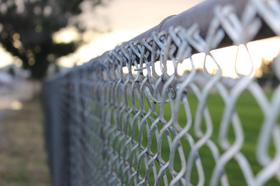For the 2025-26 school year, there are 2 public elementary schools serving 218 students in South Wasco County SD 1 School District. This district's average elementary testing ranking is 5/10, which is in the bottom 50% of public elementary schools in Oregon.
Public Elementary Schools in South Wasco County SD 1 School District have an average math proficiency score of 21% (versus the Oregon public elementary school average of 33%), and reading proficiency score of 48% (versus the 44% statewide average).
Minority enrollment is 21% of the student body (majority Hispanic), which is less than the Oregon public elementary school average of 41% (majority Hispanic).
Overview
This School District
This State (OR)
# Schools
2 Schools
1,027 Schools
# Students
218 Students
367,441 Students
# Teachers
16 Teachers
20,839 Teachers
Student-Teacher Ratio
14:1
14:1
Student By Grade
District Rank
South Wasco County SD 1 School District, which is ranked within the bottom 50% of all 185 school districts in Oregon (based off of combined math and reading proficiency testing data) for the 2022-2023 school year.
The school district's graduation rate of 70% has increased from 60-79% over five school years.
Overall District Rank
#105 out of 187 school districts
(Bottom 50%)
(Bottom 50%)
Math Test Scores (% Proficient)
21%
31%
Reading/Language Arts Test Scores (% Proficient)
40-44%
44%
Science Test Scores (% Proficient)
20-29%
30%
Graduation Rate
70%
81%
Students by Ethnicity:
Diversity Score
0.36
0.59
% American Indian
4%
1%
% Asian
1%
4%
% Hispanic
9%
25%
% Black
n/a
2%
% White
79%
59%
% Hawaiian
n/a
1%
% Two or more races
7%
8%
All Ethnic Groups
District Revenue and Spending
The revenue/student of $22,537 is higher than the state median of $18,279. The school district revenue/student has grown by 8% over four school years.
The school district's spending/student of $21,812 is higher than the state median of $19,325. The school district spending/student has grown by 8% over four school years.
Total Revenue
$5 MM
$9,902 MM
Spending
$5 MM
$10,468 MM
Revenue / Student
$22,537
$18,279
Spending / Student
$21,812
$19,325
Best South Wasco County SD 1 School District Public Elementary Schools (2025-26)
School
(Math and Reading Proficiency)
(Math and Reading Proficiency)
Location
Quick Facts
Rank: #11.
South Wasco County Middle/high School
(Math: 11-19% | Reading: 60-69%)
Rank:
Rank:
6/
Top 50%10
699 4th St
Maupin, OR 97037
(541) 395-2225
Maupin, OR 97037
(541) 395-2225
Gr: 6-12 | 134 students Student-teacher ratio: 17:1 Minority enrollment: 22%
Rank: #22.
South Wasco County Elementary School
(Math: 20-29% | Reading: 30-39%)
Rank:
Rank:
4/
Bottom 50%10
308 Deschutes Ave
Maupin, OR 97037
(541) 395-2665
Maupin, OR 97037
(541) 395-2665
Gr: PK-5 | 84 students Student-teacher ratio: 11:1 Minority enrollment: 18%
Recent Articles

School Choice vs. Neighborhood Schools: Key Factors
Explore school choice vs. neighborhood schools in 2025. Learn key factors parents should weigh when deciding the best fit for their child.

Best School Match 2025: Public vs Charter vs Magnet
Compare 2025 public, charter, and magnet school options with updated data, trends, and strategies to find the best fit.

Public School Boundaries and Equity in 2025
Explore how public school boundaries shape access, equity, and opportunity for students in 2025. Learn the impact on families and education policy.





